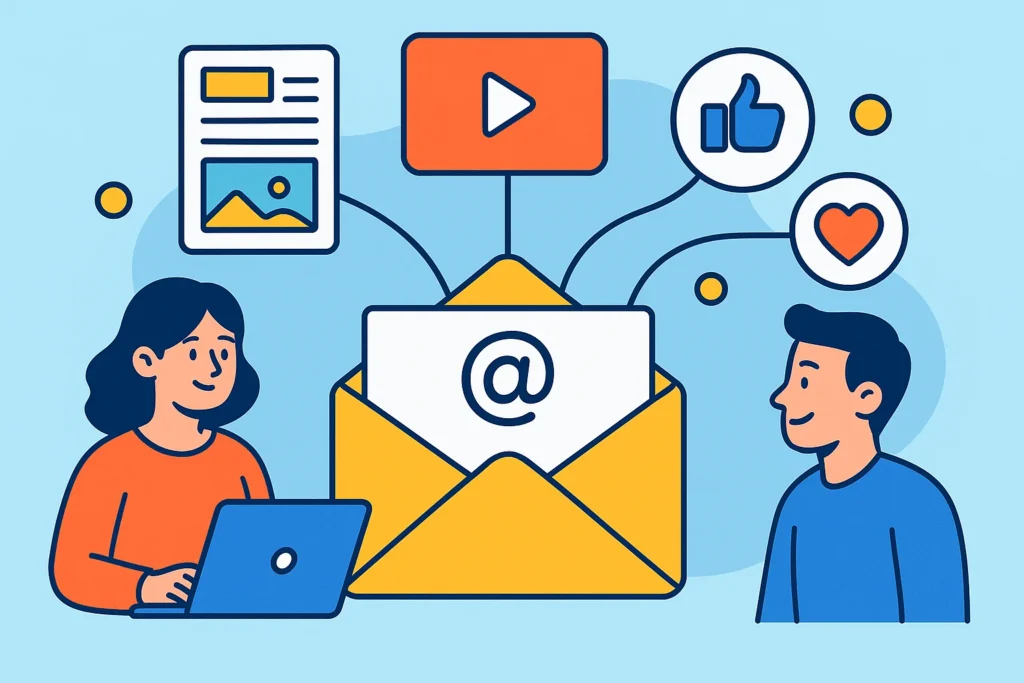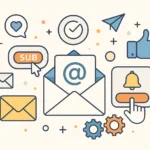Now Reading: 9 Proven Strategies to Repurpose Existing Content for Better Reach
-
01
9 Proven Strategies to Repurpose Existing Content for Better Reach
9 Proven Strategies to Repurpose Existing Content for Better Reach

In today’s digital landscape, creating high-quality content requires significant time, effort, and resources. But what if you could multiply your content’s impact without starting from scratch each time? That’s where the power of content repurposing comes in. Learning how to repurpose existing content for better reach isn’t just a time-saving hack—it’s a strategic approach that can dramatically expand your audience, boost engagement, and maximize your content ROI.
In this comprehensive guide, we’ll explore proven strategies to transform your existing content into multiple formats, extend its lifespan, and reach new audience segments across various platforms. Let’s dive into how you can make your content work harder for you.
Key Takeaways
- Break down long-form content into smaller pieces like social posts, infographics, or email snippets to target different audience segments
- Transform content into new formats such as videos, podcasts, or visual assets to reach audiences with different consumption preferences
- Update and refresh outdated content with current data and examples to maintain relevance and improve SEO
- Distribute strategically across multiple platforms to reach untapped audiences
- Analyze performance of repurposed content to identify what formats and channels work best for your audience
Understanding Content Repurposing
Before diving into specific strategies, let’s clarify what content repurposing actually means and why it’s worth your time.
What Is Content Repurposing?
Content repurposing is the process of taking existing content and adapting it into different formats or redistributing it across multiple platforms to extend its lifespan and reach a wider audience. Unlike simply reposting the same content, repurposing involves transforming it to suit different channels, audience segments, or consumption preferences.
Why Repurpose Content?
The benefits of content repurposing extend far beyond simply saving time. Here’s why it should be a core component of your content strategy:
Maximizes content ROI: Get more value from the time and resources you’ve already invested in content creation.
Extends content lifespan: Instead of letting valuable content fade into obscurity, give it new life in different formats.
Reaches different audience segments: Different people consume content in different ways—some prefer reading blogs, others watching videos or listening to podcasts.
Improves SEO performance: Repurposing creates more opportunities to target keywords and build topical authority.
Reinforces your message: The marketing rule of seven suggests people need to encounter your message multiple times before taking action.
Maintains consistent presence: Keep your channels active without constantly creating new material from scratch.
Useful Articles:
Breaking Down Long-Form Content
One of the most effective repurposing strategies is to break down comprehensive pieces into smaller, more digestible formats. Here’s how to do it effectively:
Transform Blog Posts Into Social Media Content
Long-form blog posts contain numerous insights that can be extracted and reformatted for social media platforms. Instead of simply sharing a link to your blog, consider:
- Creating carousel posts for LinkedIn or Instagram highlighting key points
- Developing Twitter/X threads that break down main concepts
- Designing quote graphics featuring standout statements
- Crafting short-form text posts that tease valuable insights
For example, a 2,000-word blog post on “Content Marketing Trends” could be transformed into:
- 5-7 LinkedIn carousel slides
- 10-15 Twitter/X posts
- 3-4 Instagram graphics
- 2-3 Facebook discussion starters
Pro tip: When sharing snippets from your long-form content, always include a call-to-action encouraging people to read the full piece. This ensures you actually boost traffic to your original content.
Convert Articles Into Infographics
Visual content is highly shareable and often more engaging than text alone. If your article contains statistics, processes, or step-by-step instructions, consider transforming it into an infographic.
According to studies, infographics generate 3x more social shares than other forms of content and simplify complex data for audiences to absorb key insights at a glance.
Tools like Canva or Piktochart make it easy to create professional-looking infographics without design experience. Share these visual assets on:
- Pinterest (which is optimized for vertical graphics)
- Your email newsletter
Turn Blog Series Into Ebooks or Whitepapers
If you’ve published multiple blog posts around a specific topic, consider combining them into a comprehensive ebook or whitepaper. This not only extends the value of your content but also helps establish your brand as an authority in your industry.
For example, a SaaS company that publishes multiple guides on content marketing strategies can compile them into an ultimate guide or industry report. Offering an ebook as a lead magnet can increase email sign-ups by up to 45%, making it a great tool for audience growth and conversion.
Steps to create an effective ebook from existing blog content:
- Identify a series of related posts
- Create a logical structure and flow
- Add an introduction and conclusion
- Update any outdated information
- Design a professional cover and layout
- Add additional insights not included in the original posts
Transforming Content Into New Formats
Different audience segments prefer consuming content in different ways. By transforming your content into various formats, you can reach people with diverse consumption preferences.
Convert Written Content Into Video
Video is one of the most consumed formats online. Consider turning your blog posts, articles, or reports into video content such as:
- Tutorial videos demonstrating concepts from your written content
- Talking-head videos where you discuss key points
- Animated explainers that visualize complex ideas
- Short-form videos for platforms like TikTok, Instagram Reels, or YouTube Shorts
For instance, a blog post about “5 Email Marketing Strategies” could become a series of short videos, each focusing on one strategy. These videos can then be shared across YouTube, Instagram, TikTok, and LinkedIn to reach different audience segments.
When creating videos from written content:
- Keep them concise and focused
- Add visual elements to enhance understanding
- Include captions for accessibility
- Maintain your brand’s visual identity
- End with a clear call-to-action
Transform Content Into Podcast Episodes
The popularity of audio content continues to grow, with millions of people consuming podcasts daily. If you have insightful blog posts or industry reports, consider turning them into podcast episodes.
A study by Edison Research found that podcast listeners are 45% more likely to engage with brands they hear about on audio platforms, making this an excellent opportunity for brand visibility.
Approaches to podcast repurposing include:
- Reading and expanding on blog content
- Interviewing experts about topics covered in your content
- Discussing case studies from your written materials
- Creating a series based on chapters from an ebook
Pro tip: Record video while creating your podcast to generate multiple content pieces simultaneously. The video can go on YouTube while the audio becomes your podcast episode.
Create Slideshows and Presentations
Transform your content into slideshows or presentations that can be shared on platforms like SlideShare, LinkedIn, or as part of webinars. This format works particularly well for:
- How-to guides
- Statistical reports
- Industry analyses
- Case studies
When creating presentations from existing content:
- Extract key points and data
- Create visually appealing slides with minimal text
- Add compelling visuals to illustrate concepts
- Include your branding and contact information
- End with a clear next step for viewers
Useful Articles:
Updating and Refreshing Outdated Content
Content repurposing isn’t just about changing formats—it’s also about extending the lifespan of your best-performing pieces by keeping them current and relevant.
Refresh Statistics and Examples
One of the simplest ways to repurpose content is to update outdated statistics, examples, or case studies. This is particularly important for:
- Industry reports
- Trend analyses
- Best practice guides
- Tool or platform tutorials
When refreshing content:
- Research the latest data and statistics
- Replace outdated examples with current ones
- Update screenshots if featuring tools or platforms
- Add new sections addressing recent developments
- Remove references that are no longer relevant
Expand on Successful Content
If a piece of content has performed particularly well, consider expanding it with additional insights, examples, or perspectives. This could involve:
- Adding new sections
- Including expert quotes or interviews
- Incorporating reader questions or feedback
- Addressing related topics not covered in the original
For example, if your “Beginner’s Guide to SEO” generated significant traffic, you might expand it into a more comprehensive resource by adding sections on technical SEO, local SEO, or algorithm updates.
Reframe Content for Different Audiences
Another effective repurposing strategy is to adapt content for different audience segments or expertise levels. For instance:
- Transform a technical guide into a beginner-friendly overview
- Adapt a general piece to address industry-specific challenges
- Reframe B2C content for a B2B audience (or vice versa)
- Localize content for different regional markets
This approach allows you to reach new audience segments without creating entirely new content from scratch.
Leveraging Different Distribution Channels
Creating repurposed content is only half the battle—you also need to distribute it strategically across multiple channels to maximize reach.
Optimize for Social Media Platforms
Each social media platform has unique characteristics and audience expectations. When repurposing content for social media:
LinkedIn:
- Focus on professional insights and industry trends
- Use carousel posts for step-by-step guides
- Share longer-form text posts with key takeaways
- Repurpose case studies as success stories
Instagram:
- Create visually appealing graphics and carousels
- Transform key points into Instagram Stories
- Convert tutorials into Reels
- Use quotes and statistics as standalone posts
Twitter/X:
- Break down content into thread format
- Share key statistics with custom graphics
- Post provocative questions from your content
- Create polls based on content topics
Facebook:
- Repurpose content as discussion starters in groups
- Create short video summaries
- Share infographics with extended captions
- Develop carousel posts highlighting key points
TikTok:
- Create short, engaging videos explaining concepts
- Use trending sounds to increase discoverability
- Demonstrate processes or techniques visually
- Share quick tips extracted from longer content
Republish on Content Platforms
Extend your reach by republishing adapted versions of your content on platforms like:
- Medium
- LinkedIn Articles
- Industry publications
- Guest posting opportunities
- Quora
When republishing content:
- Customize it for the specific platform and audience
- Add new insights not included in the original
- Update examples and statistics
- Include a canonical link to the original when possible
- Adapt the tone and style to match platform expectations
Incorporate Into Email Marketing
Your email list represents an audience that has explicitly opted to hear from you. Repurpose content for email by:
- Creating newsletter versions of blog posts
- Sending video content directly to subscribers
- Developing email courses based on comprehensive guides
- Sharing exclusive expanded versions of public content
- Creating roundups of related content pieces
Pro tip: Segment your email list to deliver repurposed content to the most relevant subscribers based on their interests and behaviors.
Useful Articles:
Repurposing Webinars and Live Events
Live events and webinars contain valuable content that shouldn’t disappear after the initial broadcast. Here’s how to extend their value:
Convert Webinars Into Multiple Formats
A single webinar can be transformed into numerous content pieces:
- Full-length recording for on-demand viewing
- Edited highlights video
- Audio podcast episode
- Transcribed blog post
- Infographic summarizing key points
- Social media quote graphics
- FAQ document addressing questions asked
- Slide deck for download
For example, a one-hour webinar can be edited into short clips featuring key insights, which can then be shared over weeks or months. Research shows that short-form videos under 60 seconds receive 2x more engagement than long videos, making this a smart repurposing strategy for capturing attention.
Extract Testimonials and Case Studies
Live events often generate valuable social proof in the form of participant feedback, questions, and discussions. Repurpose these elements by:
- Creating testimonial graphics from positive comments
- Developing case studies based on questions and solutions
- Compiling FAQ resources from common questions
- Building community spotlights featuring participant insights
Create Follow-Up Content Series
Use the questions and discussions from live events to inspire follow-up content:
- Develop deep-dive articles addressing popular questions
- Create “part two” events focusing on specific subtopics
- Produce tutorial content demonstrating concepts mentioned
- Develop checklists or worksheets related to the event topic
Analyzing Performance and Optimizing Strategy
To maximize the effectiveness of your content repurposing efforts, it’s essential to track performance and refine your approach based on data.
Track Metrics Across Formats
Different content formats may perform differently with your audience. Track metrics such as:
- Engagement (likes, comments, shares)
- Traffic generated
- Time spent with content
- Conversion rates
- Audience growth
- Distribution of consumption across platforms
For example, you might discover that infographics perform exceptionally well on Pinterest, while video snippets generate more engagement on LinkedIn. This insight allows you to prioritize certain repurposing formats for specific platforms.
A/B Test Different Approaches
Experiment with different repurposing approaches to identify what resonates most with your audience:
- Test different headlines and hooks
- Compare long-form vs. short-form formats
- Experiment with various visual styles
- Try different posting times and frequencies
- Test different calls-to-action
For instance, you might repurpose a blog post into both a carousel and a video to see which format generates more engagement on Instagram.
Develop a Systematic Repurposing Workflow
To make content repurposing a sustainable part of your strategy, develop a systematic workflow:
- Audit existing content to identify repurposing opportunities
- Prioritize high-performing pieces for repurposing
- Create a content transformation plan for each piece
- Develop templates for common repurposing formats
- Schedule repurposed content strategically
- Track performance and iterate
Tools like Canva, Descript, and content calendar platforms can streamline this process and make repurposing more efficient.
Advanced Content Repurposing Strategies
Once you’ve mastered the basics, consider these advanced strategies to take your content repurposing to the next level.
Create Content Hubs
Develop comprehensive resource centers by organizing repurposed content around specific topics. This might include:
- A central pillar page or guide
- Related blog posts
- Supporting videos and podcasts
- Downloadable resources
- Interactive tools or calculators
This approach not only maximizes the value of repurposed content but also strengthens your SEO through internal linking and topical authority.
Implement Content Atomization
Content atomization involves breaking down a comprehensive piece into multiple smaller pieces, each focusing on a specific aspect of the topic. For example, a comprehensive guide on “Digital Marketing Strategy” might be atomized into:
- Individual blog posts on each marketing channel
- Platform-specific social media guides
- Tool comparison articles
- Budget allocation frameworks
- Measurement and analytics guides
This approach allows you to target specific keywords and audience segments while building a comprehensive content ecosystem.
Develop Interactive Experiences
Transform static content into interactive experiences such as:
- Quizzes based on educational content
- Assessments derived from benchmark reports
- Calculators built from statistical content
- Interactive infographics from data-heavy pieces
- Decision trees from how-to guides
Interactive content typically generates 2x more engagement than static content, making it a powerful repurposing strategy.
Successful content repurposing requires a balance of creativity and analytics. Track what works, experiment with different formats, and continuously refine your approach based on audience response. With a systematic repurposing strategy in place, you’ll be able to make every piece of content work harder for you, driving better results with less effort.





















